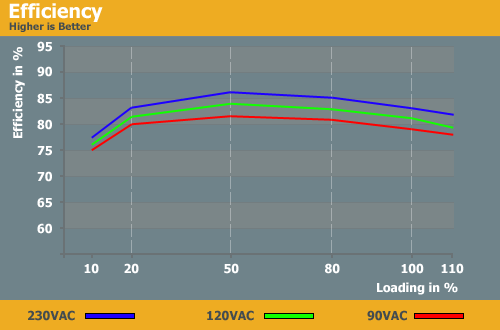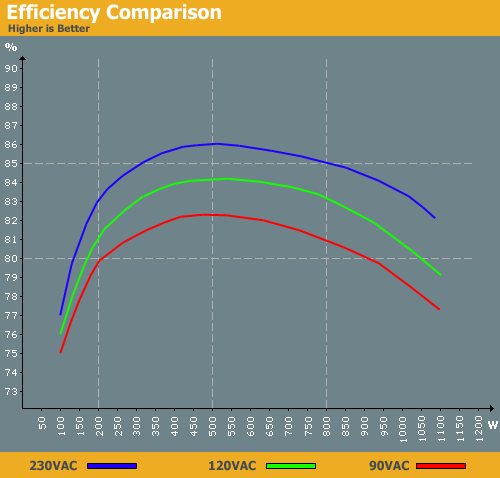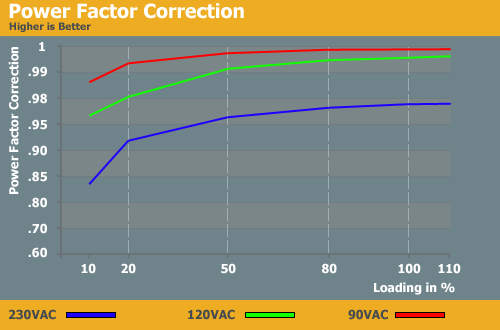Efficiency


The efficiency ramps up very slowly on this unit. The efficiency with 100W of load isn't very good, but it improves at 200W. Then it slowly moves towards its zenith, which is reached at 50% load (500W). Efficiency is as high as 86% with an AC input voltage of 230V. That's a good result, though many high-end power supplies match that figure - we have seen 86% efficiency from most of the units tested lately. With 120VAC, the result is also very good as it is still very close to the 230VAC results. 84% efficiency is very good for the lower input voltage, ranking as one of the better results at this input to date. Still, the Corsair HX1000W cannot equal the recently tested Xigmatek NRP, which has a better overall efficiency rating.
Power Factor Correction

The PFC works the same as similar models built by CWT. It has very high and good results with lower input voltage and the folks over in Europe will need to be satisfied with up to .98 (PFC) tops.










17 Comments
View All Comments
Powervano - Wednesday, April 30, 2008 - link
Oh, my bad :-D Sorry Cristoph. But your new reviews are way better and I even think best of all :)Powervano - Tuesday, April 29, 2008 - link
Thank you! :)piroroadkill - Tuesday, April 29, 2008 - link
Sweet jesus, I did certainly not expect those graphs for the 3.3 and 5v lines, with even slight increases, and as for the 12v, well, it stays bang on target.Corsair, even though they've entered the market late, have seen issues with other PSUs and created the best PSUs in every segment - it seems they can do no wrong.
Corsair, I salute you.
ineedaname - Wednesday, April 30, 2008 - link
Don't forget that corsair PSU's are actually rebranded Seasonic PSU'sDrMrLordX - Thursday, May 1, 2008 - link
Isn't the HX1000 a CWT unit?Christoph Katzer - Thursday, May 1, 2008 - link
Yes it is. Corsair buys from several companies...Calin - Tuesday, April 29, 2008 - link
Assuming a 500W draw on the wall socket, a change from 85% to 86% efficiency, the power lost inside the power supply unit (as heat) changes from 75W to 70W. While this isn't an important figure by itself, this can make is run cooler or be a bit less noisy.If you take into account the power delivered to the internal components (not the one drawn from the wall socket), this improvement in efficiency is (a little bit) better than that: for a 500W internal load, you would use 588.2W from the wall with the 85% power source, and 581.4W for the 86% unit. While the total difference is small (7W or so), it is still there.